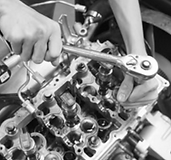Engineering and Technology Quarterly Reviews
ISSN 2622-9374




Published: 25 August 2024
Lathes’ Machine Selection Base on Operational Sensitivity and Costing
Samuel Omojola Ejiko
The Federal Polytechnic Ado-Ekiti, Nigeria

Download Full-Text Pdf
10.5281/zenodo.13370594
Pages: 19-25
Keywords: Sensitivity, Model, Finishing Time, Cost Effectiveness, Capacity
Abstract
The need to estimate the cost of operating a machine tool for the purpose of pricing a job or billing a customer is of great importance. This would establish a good relationship between customers and operators. The cost depends on the sensitivity of the machine tool. In determining the sensitivity of lathes, parameters considered were the finishing time of operation in relation to the machining parameters which were feed, capacity and speed at a unit depth of cut. The component design parameters were metal volume removed, complexity and the skill level involved. Costing was done based on literature and the current prime cost of running and operating the machine shop. The developed numerical model has a coefficient of determination R2 of 0.962 specifying a high degree of agreement for experimental and theoretical data. The results showed that lathe machines with smaller capacity have lower operational sensitivity with more cost effectiveness where as higher capacity, numerical control and CNC lathe machines had higher sensitivity but less cost effective.
References
Boothroyd, G. and Knight, W. A. (1989): Fundamentals of machining and Machine Tools 2nd Ed. New York: Dekker.
Bruce, J.B. (2002): Workshop Processes, Practices and Material 2nd ed. Butterworth Heinemann Oxford Chapter 6 & 9 pp. 85, 121-139.
Bradley, I. (1972): A History of Machine Tools 1st ed, Model and Allied Publications Ltd Hempstead. Chapter 3 pp 43-56
Cyert, R.M. and March, J.G. (1963): A Behavioral Theory of the firm Englewood Cliffs, N.J. Pretice – Hall Chapter 3 pp. 27 – 29.
Dieter, G.E. (1991): Engineering Design, 2nd ed, McGraw-Hill, New York
Ejiko, S.O. and Kareem, B. (2012): “Holistic Approached in Determining Multiple Regression Model for Lathe’s Operation Sensitivity”, International Journal of Research andAdvancement in Engineering Science, Centre for Advanced Training and Research in association with MPYRAA Tiko, Buea, South West Region, Cameroon, ISSN 2276-8149 2(1) 89 -98.
Gujarati, D. N. (2007): Basic Econometrics, 4th ed. Tata McGraw – Hill, Publishing Company Limited New Delhi. Chapter 8 pp 207 – 256
Kareem, B. (2004): Manufacturing Processes Vol. II Besade Publication Akure.
Kareem, B. (2005): Assessment of the maintenance Performance of the Cocoa processing Plant in Akure, Proceeding of 1st Engineering Forum, Federal Polytechnic, Ado – Ekiti, Nigeria pp 1 - 14
Kareem, B. (2006): Productivity Performance of Machinery in Selected Manufacturing Industries in Ondo State, Journal of Engineering and Earth Sciences, Vol. 1, The Federal Polytechnic, Ado – Ekiti pp 1-16
Kareem, B., Ejiko, S. O. and Oladebeye, D.H. (2010): Development of a Multiple Regression Model in Determining Lathe’s Operation Sensitivity, Journal of Engineering and Earth Sciences, Vol. 4 No 1, The Federal Polytechnic, Ado – Ekiti pp 12-18
Kareem, B, and Ejiko, S.O. (2013): “Machine Lathe Operational Sensitivity, Time and Cost”, SEEM Research and Development Journal, The Federal Polytechnic, Ado-Ekiti, Ekiti State Nigeria, 2 (1) 72 -80
Oladebeye, D.H. and Ejiko, O.S. (2007): Predicting future Sales Volume using some selected forecasting model, International Journal of Sciences, Engineering and Environmental Technology (IJOSEET) 2nd ed. Imperial Binder, Federal Polytechnic, Ede. pp186 - 193
Palik, M. (2006): Total productivity Model (TPM), http//www.ask.com retrieved on 26thJanuary, 2007.
Thomas, C. K., Obikawa, T.M. and Yasuo, Y. (2000): Metal Machining Theory & Applications. 1sted. John Wiley & sons Inc.New York-Toronto Chapter 1 pp 1 - 34
Wikipedia, (2007): Numericalcontrol, Retrieved on 8th May, 2007 from http://en.wikipedia.org/wiki/numericalcontrol,
Microkinetics, (2009): www.microkinetics.com/lathe1236 Retrieved on 27th January, 2009.
